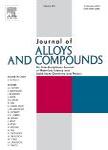版权所有:内蒙古大学图书馆 技术提供:维普资讯• 智图
内蒙古自治区呼和浩特市赛罕区大学西街235号 邮编: 010021

作者机构:College of Mechanical and Intelligent Manufacturing Central South University of Forestry and Technology Changsha 410004 China State Key Laboratory of Advanced Design and Manufacturing Technology for Vehicle Hunan University Changsha 410082 China
出 版 物:《Journal of Alloys and Compounds》 (J Alloys Compd)
年 卷 期:2025年第1036卷
学科分类:080603[工学-有色金属冶金] 08[工学] 0806[工学-冶金工程]
基 金:Science and Technology Program of Hunan Province, (2023RC3286) Science and Technology Program of Hunan Province
主 题:Heterogeneity High pressure die casting Large thin-walled castings
摘 要:This study systematically investigates the microstructural heterogeneity, mechanical property gradients, and defect formation mechanisms in large thin-walled AlSi 10 MnMg alloy components produced via high-pressure die casting (HPDC). Through experimental characterization and numerical simulations, the spatial variations in microstructure comprising fine-grained skin layers, externally solidified crystals (ESCs) in sub-skin regions, and eutectic-Si-dominated segregation bands. Results reveal that rapid solidification and thin-walled geometry promote a single central segregation band (∼300 µm), contrasting with prior reports of dual symmetric zones. Mold-filling simulations demonstrate flow bifurcation and gas entrapment at structural reinforcements, leading to defect clusters in thick-walled regions. Mechanical testing highlights significant spatial heterogeneity: yield strength (200 ± 51 MPa), ultimate tensile strength (348 ± 68 MPa), and elongation (8.78 ± 3.81 %) vary across the casting, driven by ESC distribution and eutectic phase concentration. Fractography identifies ductile failure in skin/sub-skin regions and ductile-brittle hybrid fracture in segregation zones, with eutectic Si particles acting as crack nucleation sites. In-situ EBSD tensile characterization demonstrates that interfacial stresses are generated at the boundaries of ESCs under shear stresses imposed by the molten alloy during mold filling. Dendritic ESCs with well-developed morphologies promote stress concentration, while fragmented ESCs exhibit enhanced strain accommodation via dislocation-mediated strain hardening synergizing with refined microstructures, countering their conventional role as mechanically weak phases reported in prior studies. These findings provide critical insights for optimizing HPDC processes to mitigate microstructure-property inhomogeneity in automotive structural components.